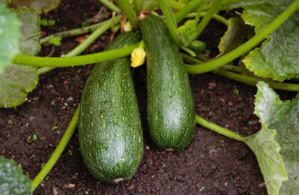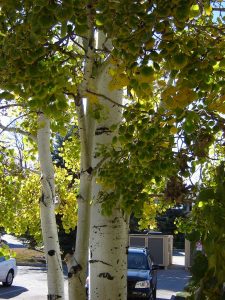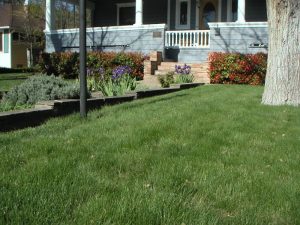Congratulations to the winners of our Zucchini Squash photo contest!
http://wattersgardencenter.com/2013/zucchini-squash-contest-results/ Zucchini / Squash Contest Results
Congratulations to the winners of our Zucchini Squash photo contest!
Ideally sized accent tree for smaller homesites in beds and borders or as a foundation planting stand out. Use as seasonal front yard attention-getter or for a long range view out back. Can be utilized in groves for creative color compositions. Adapts well to wild gardens providing big maple looks in limited spaces. An excellent plant for a Japanese-style garden, mixed with airy, deciduous small trees and dense conifers

This is a superior tree for cold northern regions. It is most attractive in groves, and as components in windrows and shelterbelts. It will stand alone as a columnar tree in the suburban environment. Tall narrow form is ideal for filling gaps between tall buildings. Somewhat adapted for street and boulevard planting. A great foreground tree against dark background of evergreen conifers. Ease of cultivation is suited to naturalistic plantings in prairies or open space habitat.

 The mountains of Arizona usually are “spotty” when it comes to rainfall. For example, when the weather service forecasts that “there is a 40% chance of rain”, 40% of our area will see rain. What is frustrating is that we never know which 40% of our gardens will revel in moisture, and which will be left dry! This year has been gratifyingly, damply different. With much of the season still ahead of us, over 15 inches of rain have been measured in my gardens. This monsoon season reminds me of the rains this area received back in the 1970′s. It really is nice to be experiencing a strong monsoon cycle.
The mountains of Arizona usually are “spotty” when it comes to rainfall. For example, when the weather service forecasts that “there is a 40% chance of rain”, 40% of our area will see rain. What is frustrating is that we never know which 40% of our gardens will revel in moisture, and which will be left dry! This year has been gratifyingly, damply different. With much of the season still ahead of us, over 15 inches of rain have been measured in my gardens. This monsoon season reminds me of the rains this area received back in the 1970′s. It really is nice to be experiencing a strong monsoon cycle.
Traditionally, by the end of September we slip out of the monsoonal pattern and back to our normal, “spotty” rain cycles. However, this year’s overabundant rains have made the next four weeks critical for gardeners. This is the season plants are most ‘talkative’, and you should get to know their “language”.
Although October through November is our normal period for plants to show their exhilarating colors, some plants declare themselves earlier. In doing so, they are “speaking” to alert us that they are struggling. They are somewhat like the gardeners who care for them. When we gardeners feel ill, we put ourselves to bed until we feel better, then indulge ourselves with appropriate sustenance until our aches and pains subside. Sick plants will put themselves “to bed” earlier in fall, much earlier than their other, healthy, partners in the yard.
When a plant shows its fall colors weeks before any other plant in the neighborhood it is screaming for help from its gardener. Although grubs and pocket gophers can be the culprits that induce root loss and plant stress, root loss usually is caused from having been planted into very heavy, rocky soils that can’t breath properly during monsoon rains. Plants in the yard can literally lose root mass because of very wet conditions. Plants that show abnormally early autumn colors are most likely the victims of these plant stresses. Seasoned gardeners know that the cure is administered in two easy steps.
Step one is “Soil Activator”, which encourages a plant to generate deeper roots as it repairs damage. This is the equivalent to chicken soup for you and me. This ‘chocolate for the soil’ fertilizer will regenerate dead soil around sick plants so they will want to send out new root hairs, those precursors to healthy roots. Even plants that are not sick will enjoy this soil nutrient by showing off deeper, more vibrant autumn colors towards the end of the year.
 Step two is just as simple: in one month follow up the soil activator with a natural plant food. Please stay away from synthetic foods for sick plants. They are much too strong for struggling plants and are dangerous to birds and pets. I developed a fertilizer called “All Purpose Plant Food” 7-4-4 that really helps both newly planted and sickly plants. Put plants to bed for the winter with this all natural food and you will have set the stage for some energetic spring growth next year.
Step two is just as simple: in one month follow up the soil activator with a natural plant food. Please stay away from synthetic foods for sick plants. They are much too strong for struggling plants and are dangerous to birds and pets. I developed a fertilizer called “All Purpose Plant Food” 7-4-4 that really helps both newly planted and sickly plants. Put plants to bed for the winter with this all natural food and you will have set the stage for some energetic spring growth next year.
Grubs and pocket gophers are more difficult to handle than too wet soil. Gophers are easy to spot by their exit tunnels of mounded dirt. These underground rats live to eat the roots off of our plants! For a personalized gopher solution contact me or revisit my February 22 column: “Keep Gophers from Devastating Landscapes”.
Grubs are white ‘C’-shaped insects that can attack and kill plants, trees, and shrubs by the dozens. Because they eat new root hairs as they grow from a plant, grubs literally starve their victims to death. Fortunately, the solution to eradication is very easy. Kill grubs by applying “Grub Killer” during the next monsoon rain. As the grub killer moves through the soil it eliminates grub activity and keeps this misery-inducing creature away for a year. In one month follow up with the “All Purpose Plant Food” to set the stage for healthy, vibrant spring growth.
If you are not sure why a plant is stressed enough to be showing its autumn colors early, apply both Soil Activator and “All Purpose Plant Food”. These two products will insure that better plant health will develop for the next spring season.
~~ ~~ ~~ ~~ ~~ ~~ ~~
 Plant of the Week – Dazzling Stacy mums are the best selling variety of mum. They deliver a super long bloom time and enjoy local garden hardiness. This garden mum glows yellow with a halo of fiery orange around each daisy-like flower. These big bold perennials are perfectly shaped and add color in autumn when few flowers are in peak bloom. Mums prefer an autumn planting into their gardens. They also love showing off in containers that share their ground space with Purple Prescott Pansies.
Plant of the Week – Dazzling Stacy mums are the best selling variety of mum. They deliver a super long bloom time and enjoy local garden hardiness. This garden mum glows yellow with a halo of fiery orange around each daisy-like flower. These big bold perennials are perfectly shaped and add color in autumn when few flowers are in peak bloom. Mums prefer an autumn planting into their gardens. They also love showing off in containers that share their ground space with Purple Prescott Pansies.
~~ ~~ ~~ ~~ ~~ ~~ ~~
 Photo Contest! Have you entered your garden prize into Watters’ FaceBook Photo Contest? Time is running out to get your photo and votes in by from you and your friends – contest ends Sunday, September 15th! There will be lots of winners who will receive a gift certificate from The Natural Healing Garden AND a Mum from Armstrong Growers
Photo Contest! Have you entered your garden prize into Watters’ FaceBook Photo Contest? Time is running out to get your photo and votes in by from you and your friends – contest ends Sunday, September 15th! There will be lots of winners who will receive a gift certificate from The Natural Healing Garden AND a Mum from Armstrong Growers ![]()
Until next week, I’ll see you at the garden center.
30 second plant tip of the day: Butterfly Bush Buddleja
A large rangy shrub useful for adding mid to late summer interest to shrub borders. Plant in the back of cottage or country garden perennial borders for mass with a casual look and feel. Use against over-long fence lines that need relief. Interesting airy filler for sideyards where privacy is needed at windows rewarded by flowers and butterflies. Essential large structural background for wildlife friendly compositions. A fast growing shrub for solutions to barren

This rugged, cold hardy native grass features blue-green foliage and striking, flag-like summer flowers on stiff, weather resistant stems. Provides cool-season interest, as the long lasting blonde seed heads remain through winter. Tolerant of many soil types, this is a perfect choice for low maintenance landscapes.

30 second plant tip of the day – Timeless Beauty® Desert Willow Chilopsis linearis:
This unique selection is prized for an especially long flowering period, since it does not set seed. Large, fragrant bi-colored burgundy and pale lavender blooms appear in clusters at the ends of the branches. The tubular flowers are highly attractive to hummingbirds. This deciduous tree works well in borders, containers or firescaping situations.

Wondering what autumn planting can be done in your high mountain garden for great color right now? This video covers plants that prefer fall planting and look their best right through winter.
 “H-O-T” is the only word to describe the west walls of our homes during the afternoon hours in Arizona. That baking sun can roast western exposure plants as it’s causing A/C bills to skyrocket. Best at coping with a western exposure are tall deciduous trees. Every spring, their fresh new leaves create much-needed shade from that afternoon fireball. Because they lose their leaves in fall, their bare branches allow penetration of winter’s sun to warm that side of a house.
“H-O-T” is the only word to describe the west walls of our homes during the afternoon hours in Arizona. That baking sun can roast western exposure plants as it’s causing A/C bills to skyrocket. Best at coping with a western exposure are tall deciduous trees. Every spring, their fresh new leaves create much-needed shade from that afternoon fireball. Because they lose their leaves in fall, their bare branches allow penetration of winter’s sun to warm that side of a house.
Quaking aspen have a tall columnar form that can provide good shade in small backyards or between homes at the property lines, especially where that hot western sun bakes exterior walls. Aspens also can effectively shade patios and will grow tall enough to eventually shade second story decks.
With their famous “quaking leaves”, aspens ornament windy hilltops, and the Arizona variety shows off with the best of them. The slightest breeze causes the leaves to “dance”, their moving and swirling adding another dimension to the landscape that is unique to the mountains.
The aspen’s format, taller with less width, is perfect for framing vistas. In landscape designs I like placing aspens at decks and patios, using them as a picture frame that guides the eye towards the perfect sunset, a mountain peak, or down toward a meadow view. They don’t take over the yard after several years like so many other fast growing trees.
Garden centers are stocking up with autumn aspen, easily identified by their golden colors and paper white bark. If you are looking for a really tall, up to 25-foot high, Aspen specimen, now through October is the only time you will find the largest sizes available. I have several spectacular aspens in stock that are taller than the peaks of my tallest greenhouse!
To reduce transplant shock, some garden writers suggest planting aspens in autumn right after the leaves have fallen. I prefer to plant aspen while the monsoon season still is delivering its liquid gold. The rains increase planting success, and the landscape can enjoy established golden autumn colors through October. Whether planted when leaves are still green or after leaf drop, this is an ideal season to be planting a new aspen.
~~ ~~ ~~ ~~ ~~ ~~ ~~
September is the month to install a new lawn, extend an existing yard, or over seed the grass in a tired lawn. Whether you install grass by seed or sod, success hinges on your preparation of the soil.
 Remove rocks and kill the weeds in the area where you want to put your lawn. Remove any large dirt clods and correct any irregularities in the grade. Add about 2″ of mulch to the soil and then till to a depth of 6 inches. Settle the area with a roller or heavy application of water. Never plant grass seed on “fluffy” soil or you end up with an uneven, rolling lawn. Rake, or “scarify”, the surface to form a loosened seedbed.
Remove rocks and kill the weeds in the area where you want to put your lawn. Remove any large dirt clods and correct any irregularities in the grade. Add about 2″ of mulch to the soil and then till to a depth of 6 inches. Settle the area with a roller or heavy application of water. Never plant grass seed on “fluffy” soil or you end up with an uneven, rolling lawn. Rake, or “scarify”, the surface to form a loosened seedbed.
Apply both Soil Activator and my specially blended “All Purpose Plant Food” 7-4-4 over the raked seedbed. Soil Activator stimulates deep roots; the plant food promotes fast development of those luscious green blades. Now you are ready to spread seed.
There are two varieties of grass that hold their green for most of the year. One is called the “Prescott Mix”, a blend of perennial rye and blue grass. The rich green color is soft to look at and even softer to walk on. While this old-timers’ favorite is the one seen in photographs and magazine covers, its negative aspect is the considerable amount of water required for successful up-keep.
Fescue is the second and tougher of the two varieties. It is deep rooted and requires far less water. It bounces back from heavy traffic and daily abuse from kids and dogs. I know because this is the lawn chosen for our homes, and it has stood up to heavy use every time. Fescue lawns have a wide yet soft blade, and it has that nice clean look after mowing. Irrigate no more than about twice a week even during the hottest days in June.
For over seeding do not spread grass seed directly onto thatchy areas; the seeds will float and never get a taproot down into the surrounding soil. Rake out the existing lawn’s dead thatch areas to expose the soil beneath. Sowing on bare soil gives the seed a place to germinate.
Roll the entire surface to press the soil around the seed or apply another heavy application of water. Cover the seeded bed with a light layer of mulch. This will regulate moisture, temperature, and keep the birds from dining on the seed. Right now our weather is so nice that the seed will germinate within days.
Until next week, I’ll see you in the garden center.